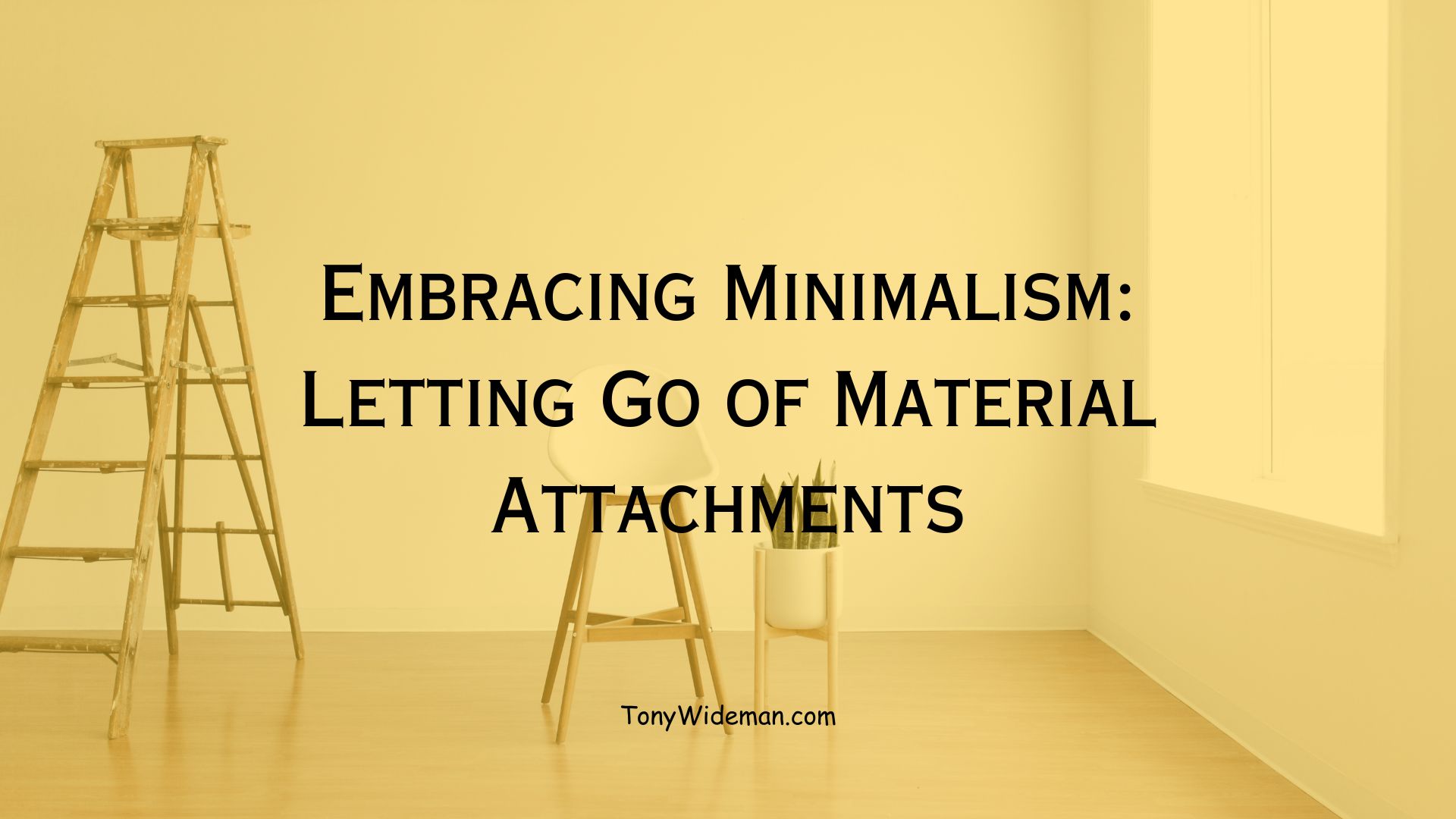Minimalist Guide to Progressive Muscle Relaxation
Progressive Muscle Relaxation (PMR) is a powerful technique to help individuals alleviate stress, anxiety, and muscle tension.
It’s a simple yet effective method that involves systematically tensing and relaxing muscle groups to promote relaxation throughout the body.
In this comprehensive guide, we will explore the world of progressive muscle relaxation, experience its benefits and techniques, and learn how you can incorporate it into your daily life.
Introduction to Progressive Muscle Relaxation
Progressive Muscle Relaxation, often termed PMR, was developed by American physician Edmund Jacobson in the early 20th century.
It involves systematically tensing and then relaxing muscle groups to release physical and mental tension.
PMR is based on the idea that muscle relaxation can lead to a calmer mind, making it a valuable tool for managing stress and anxiety.
Understanding the Science Behind PMR
The science behind Progressive Muscle Relaxation is grounded in the mind-body connection.
When we experience stress or anxiety, our bodies respond with muscle tension, increased heart rate, and shallow breathing.
PMR works by interrupting this stress response. As we deliberately relax our muscles, the body sends signals to the brain that it is safe to calm down, reducing stress hormones.
Getting Started: What You Need
To start your journey with PMR, you only need a quiet and comfortable space where you won’t be disturbed.
You can perform PMR sitting in a chair or lying down, whichever is more comfortable for you.
It’s essential to wear loose and comfortable clothing to allow unrestricted movement during the practice.
Step-by-Step Guide to Progressive Muscle Relaxation
Preparation: Finding a Quiet Space
Before you begin, find a quiet and peaceful space to focus without interruptions. Turn off your phone or any other potential distractions.
The Basics: Deep Breathing
Start with deep breathing to calm your mind and prepare for the muscle relaxation exercises.
Inhale deeply through your nose, count to four, hold your breath for a count of four, and then exhale slowly through your mouth, counting to four.
Repeat this process several times until you feel more relaxed.
Starting with the Toes: Foot and Ankle Tension Release
Sit or lie down comfortably and close your eyes.
Focus on your toes, curl them tightly, and hold for a few seconds.
Then, release the tension, allowing your toes to relax completely.
Feel the difference between tension and relaxation.
Continue this process, moving up through your body, gradually releasing tension in your calf muscles, thighs, abdomen, chest, shoulders, neck, and head.
As you progress, you’ll become more aware of the soothing sensation of muscle relaxation.
Tips for a Successful PMR Session
- Consistency is Key: For the best results, practice PMR regularly. Aim for at least once daily, but more frequent sessions can yield even greater benefits.
- Practice Mindfulness: As you perform PMR, stay present in the moment. Pay attention to the sensations of tension and relaxation in your body. This mindfulness enhances the effectiveness of the technique.
- Enhancing Your Experience with Guided PMR: If you’re new to this technique, consider using guided PMR recordings or apps to help you through the process.
Benefits of Progressive Muscle Relaxation
Stress Reduction
One of the primary benefits of PMR is stress reduction. As you release muscle tension, your body’s stress response diminishes, leaving you feeling calmer and more composed.
Improved Sleep
PMR can be a valuable tool for improving sleep quality. By practicing PMR before bedtime, you can relax your body and mind, making it easier to fall asleep and enjoy a restful night.
Pain Management
People dealing with chronic pain conditions often find relief through PMR. The relaxation of tense muscles can reduce pain and improve overall comfort.
Anxiety and Depression Relief
PMR is known to be effective in reducing symptoms of anxiety and depression.
It helps individuals regain control over their bodies and minds, reducing the impact of these mental health challenges.
Incorporating PMR into Your Daily Routine
To experience the full benefits of PMR, consider integrating it into your daily routine at different times.
Morning Routine
Begin your day with a short PMR session to set a positive tone.
This can help you start your day with a clear and relaxed mind.
Midday Break
Take a break during your busy day to perform a quick PMR session. It can reenergize you and reduce the build-up of stress.
Evening Wind-Down
End your day with a more extended PMR session to unwind and prepare your body for a peaceful night’s sleep.
Progressive Muscle Relaxation for Specific Situations
Work-Related Stress
PMR can be beneficial for managing stress at work. Take short PMR breaks to maintain focus and reduce workplace tension.
Exam Anxiety
Students facing exam anxiety can benefit from PMR. It helps calm nerves and enhances concentration during study sessions and exams.
Managing Chronic Pain
For individuals dealing with chronic pain conditions, regular PMR can be a valuable addition to their pain management strategy.
Progressive Muscle Relaxation for Children and Teens
PMR can also benefit children and teenagers by helping them manage stress and anxiety effectively.
Adapting PMR for Kids
When introducing PMR to children, use age-appropriate language and make it a fun and engaging activity.
Helping Teens Cope with Stress
Teenagers facing academic or social pressures can use PMR to manage their stress and improve their overall well-being.
PMR and Its Connection to Mindfulness Meditation
Progressive Muscle Relaxation shares similarities with mindfulness meditation, making them potent for achieving inner peace and balance.
Combining PMR with Breathing Exercises
Pairing PMR with deep breathing exercises can enhance the relaxation process, promoting a more profound sense of calm and tranquility.
Conclusion: A Path to Inner Calm
Progressive Muscle Relaxation is a simple yet effective technique that empowers you to take control of your body’s response to stress and tension.
By incorporating PMR into your daily routine, you can experience reduced stress, improved sleep, and enhanced overall well-being.
So, take a moment for yourself, find a quiet space, and embark on a journey to inner calm through Progressive Muscle Relaxation.
Frequently Asked Questions (FAQs)
Q1: How often should I practice PMR for maximum benefits?
To maximize its benefits, aim to practice PMR at least once a day. However, more frequent sessions, such as morning and evening routines, can provide more significant advantages.
Q2: Can PMR help with insomnia?
Yes, PMR can help improve sleep quality and manage insomnia. Performing PMR before bedtime can relax your body and mind, making it easier to fall asleep.
Q3: Is PMR suitable for people with physical disabilities?
Absolutely. PMR can be adapted to accommodate individuals with physical disabilities. It can offer relief from muscle tension and stress regardless of physical limitations.
Q4: What is the ideal duration for a PMR session?
A typical PMR session lasts 15 to 30 minutes. However, you can customize the duration to fit your schedule and needs.
Q5: Can PMR be used as a complementary therapy for anxiety disorders?
Yes, PMR is often used as a complementary therapy for anxiety disorders. It can help individuals regain control over their bodies and minds, reducing the impact of anxiety symptoms.






